My heart is racing and goosebumps come over my body as we hear a silverback call through the jungle. A sound that is like no other.
I could have sworn he was directly behind us, but in fact, he just charged through the trees directly in front. I lose my footing and grab the nearest thing possible to gain my balance back. Are we really this close? With no barrier but the shrubs in front of us? Breathe, relax and start admiring. This ain’t a zoo!
Africa offers some of the best animal encounters in the world. From the herds of elephants in Kruger National Park to the pride of Lions in the Serengeti, you’re constantly in awe. Trekking with Gorillas in the Bwindi National Park was yet another bucket list item we were determined to cross off our list. Africa seems to have a few of these!
There are only two populations of mountain gorillas left in the world. The first lives in the Virunga Volcanic Mountains of Central Africa, with groups scattered between Uganda, Rwanda and The Republic of the Congo and the second population lives in the Bwindi Impenetrable Forest, where we tracked them. Due to detrimental human activity, such as poaching, war, disease and habitat destruction, there are roughly only 790 mountain gorillas left in the world and unfortunately, are now threatened by the possibility of extinction.
What Mountain Gorilla Trekking is Really Like
First off, this isn’t a walk in the park. It’s a long schlep in the thick, dense forest, up and down hills! It isn’t easy, but it’s worth it.
Our day began at 4:45 am. We grabbed our packed breakfast and lunch box and set off in the car for the 2.5 hour trip to the southern sector of the forest. After a short briefing of the do’s and don’ts (pay attention to these!), we were separated into our respective groups of 8 and off we went.
Walking behind two rangers and a police officer, we learnt all about these incredible creatures and what we were up against. The ranger’s passion and knowledge were both inspiring and informative. The first half hour of the walk was on the outskirts of the forest, up steep hills overlooking the valley below. It was 90% vertical and we hadn’t even hit the forest. Do you think they’ll be just around this corner? If only…
“How much further to go?”
I sounded like a small child in the backseat of the car en route to my first vacation; both inpatient and excited. The Rangers were in constant contact with the trackers who had been out in the forest 2 hours earlier, tracking our gorilla family. They track them by starting where they left them the previous day and then following the broken branches and footprints. An extremely difficult procedure that I’m glad I don’t have to do.
As time continued to pass, we veered off the path and began our challenging walk into the thick green jungle. Our trackers, bashing through the forest with their machete begin to make some what of a path for us to follow. Sticks, branches, bugs, trees, logs and grass are just a few of the obstacles that begin to come our way. Another hour passed, and still no word on the radio. I dare ask again but my tongue slips “how much further to go?“. His response wasn’t exactly what I was looking for… “At least another 1.5 hours ma’am”… We’re dripping in sweat and our legs are burning. Gorillas, you better be worth it!
Shortly after we can hear the rustling in the trees and the walkie talkies are switched back on. The trackers begin to make deep grunting noises to communicate to the gorillas that we are on our way and within 5 minutes, a branch snaps and right in front of us, is one of the largest gorillas I’ve ever seen. Boom. Hello, Silverback.
This gorilla family, although habituated, are still wild animals, therefore their behaviour is not predictable or controlled in any way. He placed his giant body directly on the ground in a relaxed comfortable manner, turned his head and stared us straight in the eyes. We all froze, barely making a sound. We watched with our hearts pumping out of our chest and couldn’t believe what was right before us. After 15 minutes of pure amazement, we ventured off to find the rest of the family.
Below is a compilation of some of the gorilla sightings we saw, shot on our iPhone.
What are you looking at punk?
Walking with and admiring the gorillas in their natural environment is indescribable. They notice you but are not bothered by your presence and often just looked directly back at you. We witnessed them playing together, swinging in trees, playing tug of war with the leaves, falling backwards off the branches, eating, grooming, sleeping, running, climbing and walking. There are so many aspects of the gorilla that resembles that of a human, especially the babies.
And just like that, our “5-minutes left” warning is given and our 60 minutes is almost up. I’m really dreading the long, difficult 3.5-hour hike back to our starting point, but can’t help but feel blessed to have experienced this in the first place. It’s a short time to spend with these animals, but it’s easy to understand the reasons why. There’s no doubt our footprints, memories and a lot of our lung capacity have now been left behind in the jungle.
We made it back to our starting point by early evening and had the opportunity to watch the local ladies of the village sing and dance a traditional African dance. It was the perfect way to end our day.
So much colour!
Gorilla Families
There are currently 12 Habituated Gorilla Groups that can be tracked in Uganda and 11 of them are found in the Bwindi Impenetrable Forest. We trekked to find The Kahungye Gorilla Group, a family consisting of 16 mountain gorillas. (Wowza!).
Photo Credit: Prime Uganda Safaris
A Habituated Gorilla Group is simply a gorilla family used to human presence. As time goes on, the gorillas become used to humans and will continue going about their daily life whilst you are around. This habituated process can take 2-3 years and they begin one family at a time.
Although rare, it is possible for the babies to become intrigued with humans around and sometimes they have the urge to be playful around you. Due to strict government laws, the interaction is strictly limited to one hour only and they encourage you to stay at least 7 meters away at all times. This is to prevent the spreading of any diseases as well as disturbing them in their home for long periods of time.
Gorilla Permits
There are roughly 790 mountain gorillas remaining in the whole world (none can be found in any zoo’s) and half of these live in the Bwindi Impenetrable Forest of Uganda. Obtaining a permit to trek with these amazing animals is 100% necessary and should be arranged at least 3 months before your desired travel date. You’ll be given a “certificate” once you finish the trek (I know I know, so dorky).
As of 2017, Gorilla Permits are priced at $600 USD and you must be over the age of 15 years. During low season (April, May & November), the permit is reduced to $450 USD per person.
There are only 96 permits given per day and 8 people are allowed to track one family at any given time. If you don’t find the gorillas, (there is a 0.01% chance of this happening), they will refund you 50% of the permit fee or give you the chance to try again the following day. Remember, it is the wild so no promises can be made!
See here for up to date information on obtaining a Gorilla Permit.
Note: You must bring your passport to secure your permit at the gate.
What’s the best time to trek for Gorillas?
The best time to visit the national park is during the dry months of December-February and June-September. Although the jungle is still fairly humid and muddy, you have a lesser chance of rain in this period. During the low season of March to May and October to November, you’ll find the permit cost drop and most lodges reduce their rates to attract more tourists.
Where to Base Yourself for Hiking with Gorillas
Bwindi Impenetrable National Park has several regions. Buhoma in the North, Ruhija in the East, Rushaga and Nkuring in the South and each of these sections house their own gorilla families and accommodation properties.
It is strongly advised to secure your permit with a safari tour operator. This not only reduces the stress or trying to organise yourself but they ensure you base yourself in the correct area of the National Park, close to the family you plan to trek. See here for a variety of lodging options or book this section on Tucan Travel’s Gorilla Safari. Or you could even go gorilla trekking in Rwanda too.
Our gorilla trek was part of our Eastern African Tour with Tucan Travel, therefore, we had no control over where we stayed or which family we trekked to. We were based in Lake Bunyonyi, a 2.5-hour drive from where we started our trek. If we could have avoided this, we would have but the lake itself and the surrounding islands were worth the visit.
What to Bring on Your Gorilla Safari
Pack small and pack light! You could be trekking anywhere from 45 minutes to 4 hours (or more!). They do offer porters for $15 to carry your belongings and if you’re injured or elderly, you can hire them to carry you on a stretcher but it doesn’t come cheap ($350 + USD).
- Comfortable hiking shoes suitable for steep muddy slopes, preferably with good grip.
- Snacks and a light lunch.
- Walking sticks or poles. They provide them for you.
- Water, at least 1 litre and avoid plastic bottles.
- Full charged camera with empty memory card.
- Bug spray and sunscreen.
- Long pants and a long sleeve shirt.
- Light rain jacket.
- Gloves. This is optional but some people feel it is easier to move plants, trees and sticks out of the way with some hand protection.
Gorilla Trekking Rules
- Never attempt to touch a gorilla. If they choose to touch you, step back slowly or let them. Most of the time they are just curious and won’t cause any harm.
- Don’t use flash when taking photos.
- There is stinging nettle (poisonous plant) in the jungle so wear long pants (unlike Jacob who did not have any) and a long sleeve shirt.
- Take your rubbish out of the forest with you.
- Keep your voice down when you are close to the gorillas.
- Do not trek to the gorillas if you are unwell. This is to avoid the risk of transmission of diseases.
- Do not smoke, eat or drink when you in the presence of the gorillas.
Gorilla Fun Facts:
- Mountain gorillas have thicker fur than other species of gorillas as it allows them to live in cooler temperatures.
- Aside from the silver stripe on their backs, male mountain gorillas are distinguished from females because they have a crest of fur on their heads.
- Gorillas start their day once the sun has risen with one nap in the middle of the day. Some say they have a similar sleeping schedule to that of a human.
- Males consume up to 25kg of leaves a day.
- Female mountain gorillas can produce young as early as age 10.
- One fully grown Silverback weights between 180kg – 220kg. Females weigh just half of that.
- A Silverback becomes a Silverback at the age of 14. If there are multiple males in one family, the largest will predominately become the dominator.
There are definitely experiences you can’t put a price tag on and despite being completely exhausted, coming face to face with the gorillas in their natural habitat was a true privilege and it absolutely goes down as one of the most incredible animal encounters yet.
If you have the opportunity to do this. Take it.
Married Days Survived; 881

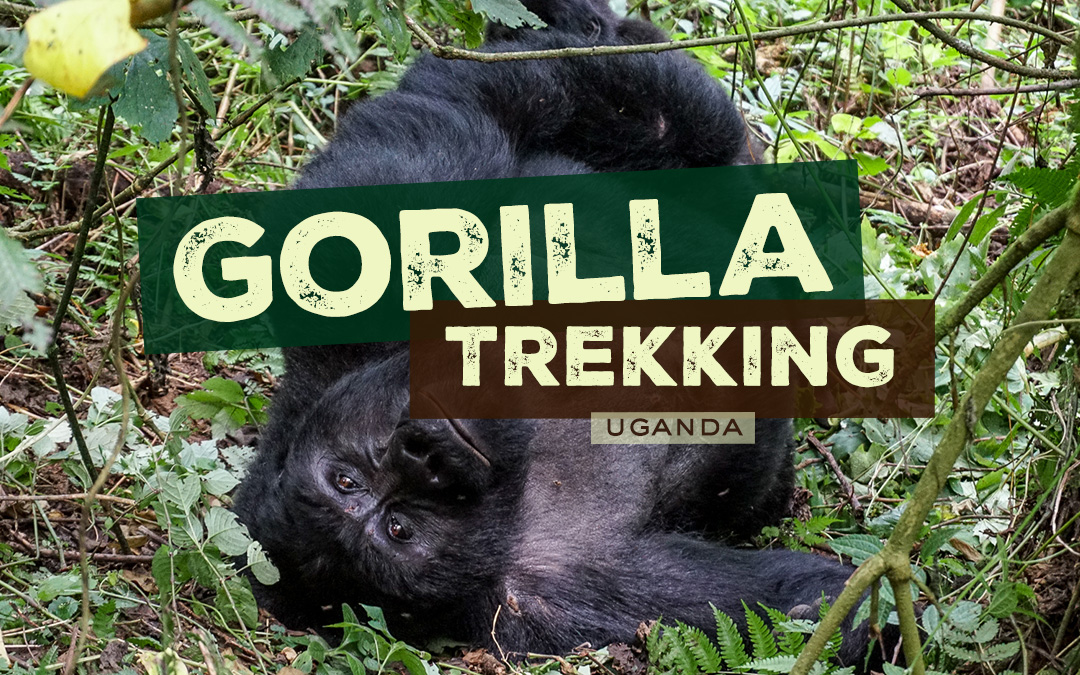






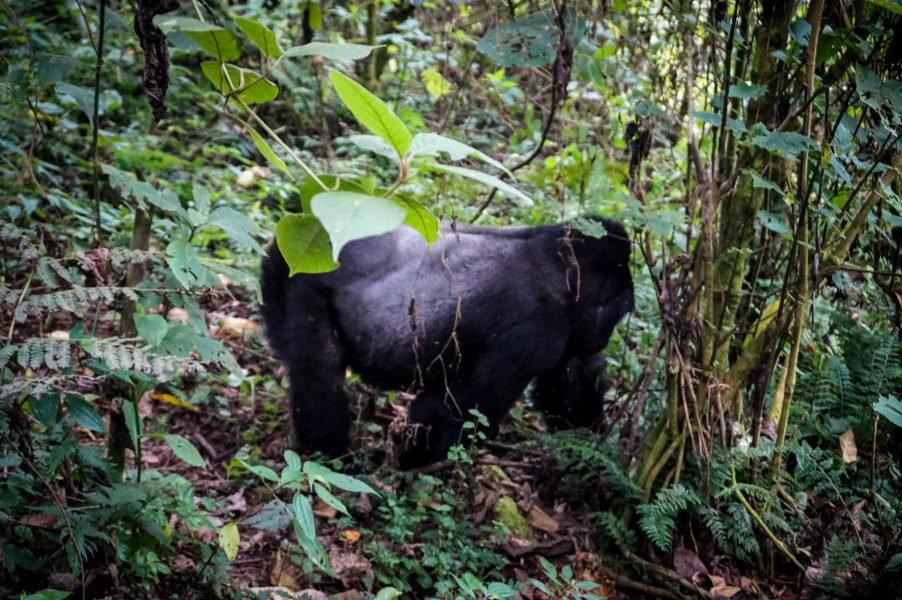
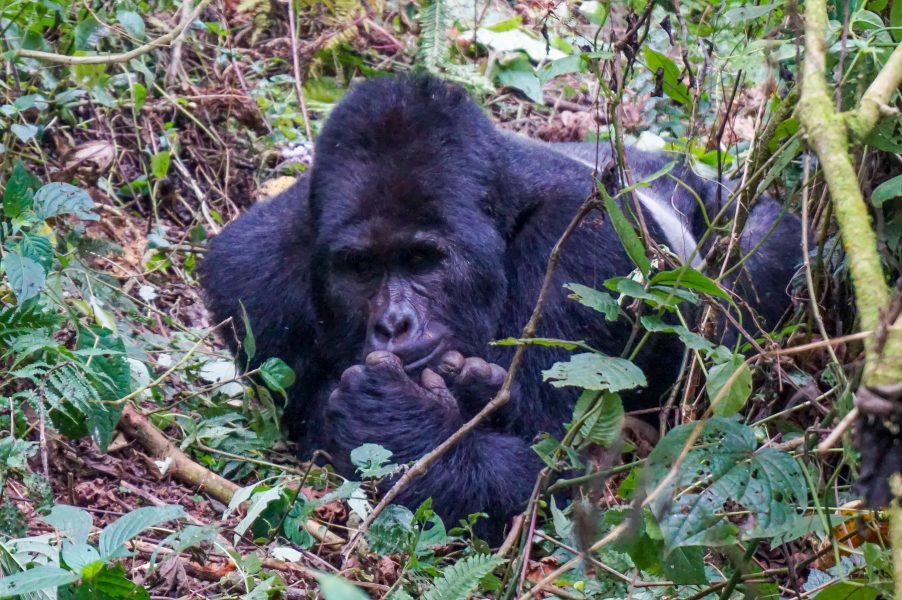





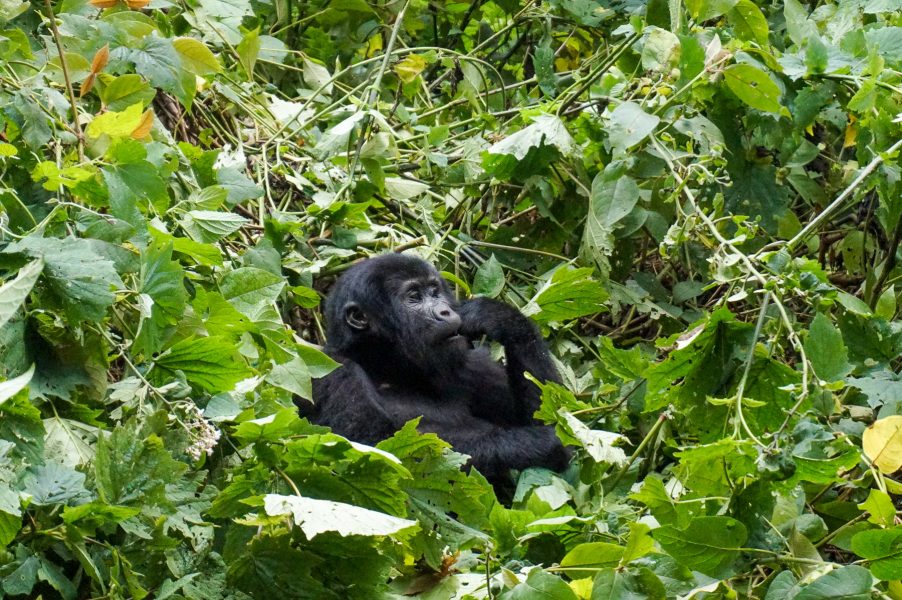
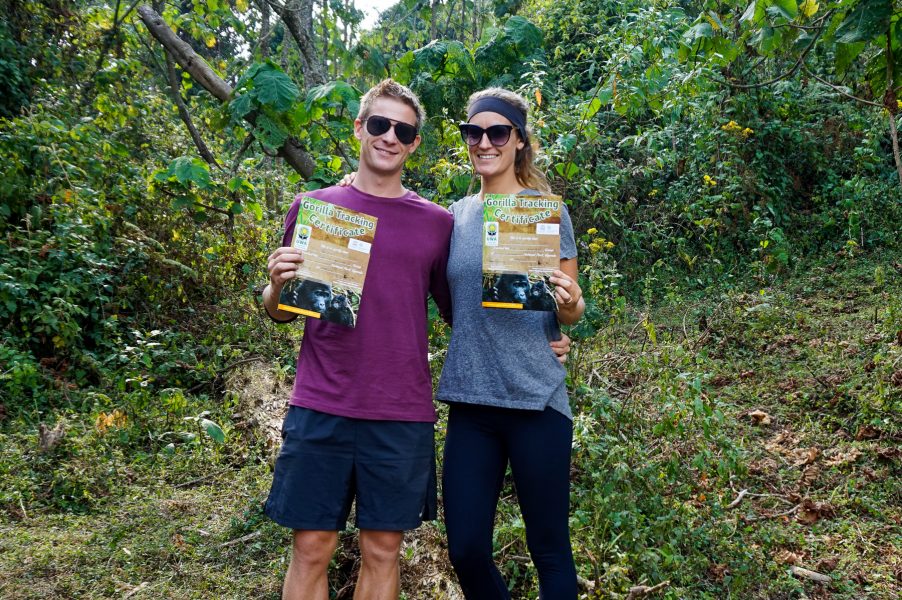



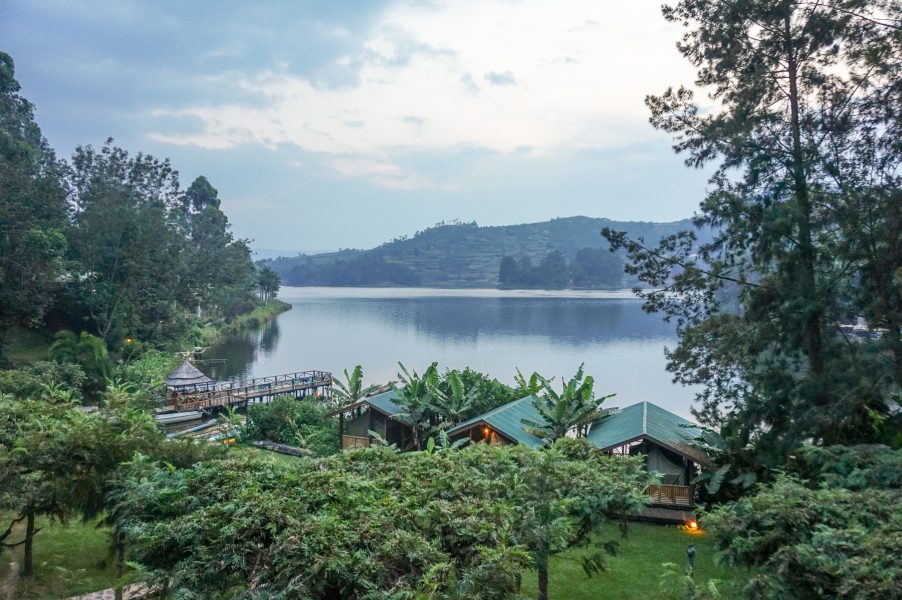













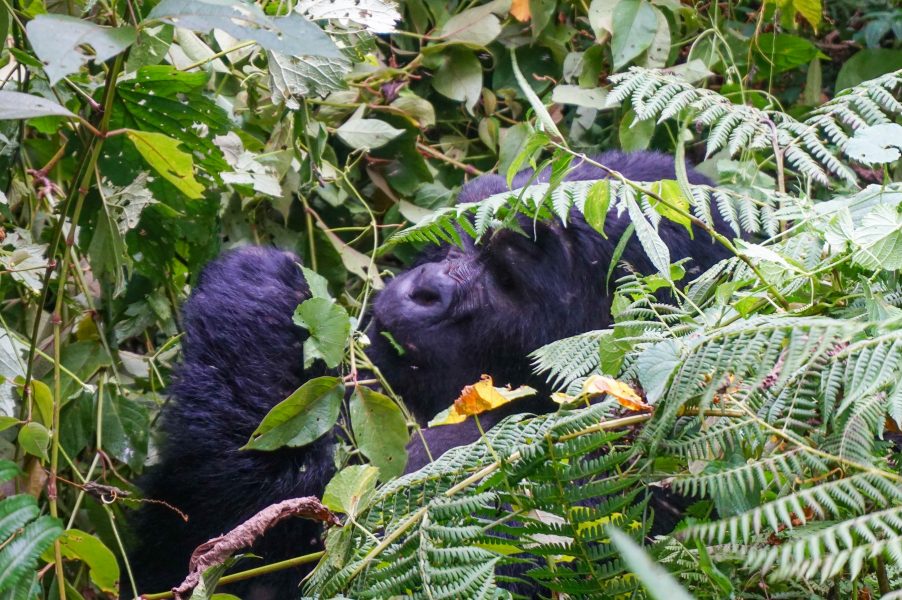


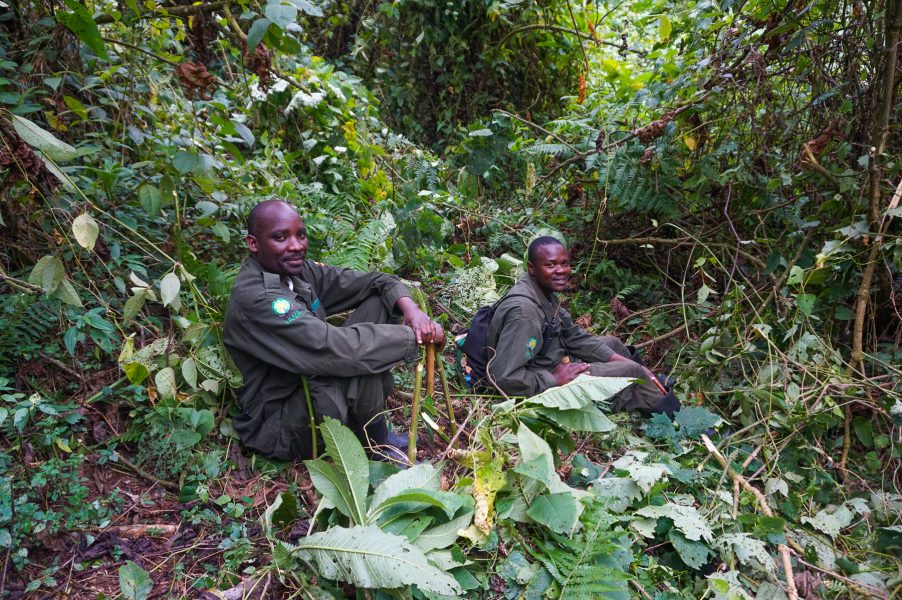










So incredible! What an experience.
It was so amazing!
Hey awesome blog!
Did you take these photos with your iPhone? Do you think an iPhone is sufficient ?
Thanks 🙂
Depends what iphone you have ;)?
It¦s really a nice and helpful piece of info. I am glad that you just shared this helpful info with us. Please stay us up to date like this. Thank you for sharing.